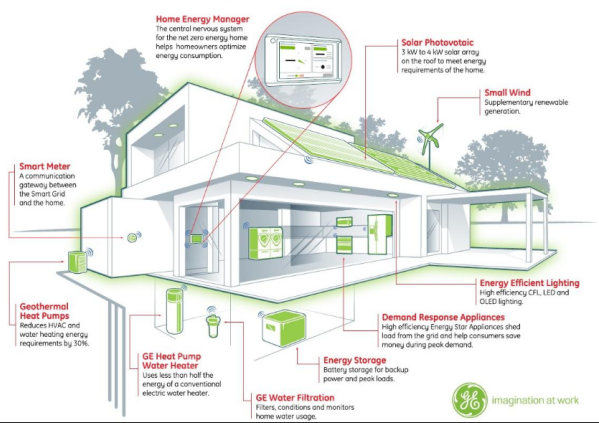
Amidst rapid economic growth and urbanization, India’s buildings sector is anticipated to record the world’s fastest surge in energy consumption through 2040. The sector consumes over a third of India’s electrical energy, to meet the growing demand for lighting, space heating and cooling.
A building’s location and surroundings play a key role in regulating its temperature and illumination. For example, trees, landscaping, and hills can provide shade and block wind. In cooler climates, designing northern hemisphere buildings with south facing windows and southern hemisphere buildings with north facing windows increases the amount of sun (ultimately heat energy) entering the building, minimizing energy use, by maximizing passive solar heating. Tight building design, including energy-efficient windows, well-sealed doors, and additional thermal insulation of walls, basement slabs, and foundations can reduce heat loss by 25 to 50 percent.
Dark roofs may become up to 39 °C (70 °F) hotter than the most reflective white surfaces. They transmit some of this additional heat inside the building. White roof systems save more energy in sunnier climates. Advanced electronic heating and cooling systems can moderate energy consumption and improve the comfort of people in the building.
Proper placement of windows and skylights as well as the use of architectural features that reflect light into a building can reduce the need for artificial lighting. Increased use of natural and task lighting has been shown by one study to increase productivity in schools and offices. Compact fluorescent lamps use two-thirds less energy and may last 6 to 10 times longer than incandescent light bulbs. Newer fluorescent lights produce a natural light, and in most applications they are cost effective, despite their higher initial cost, with payback periods as low as a few months. LED lamps use only about 10% of the energy an incandescent lamp requires.
In response, EESL’s Buildings Energy Efficiency Programme offers a uniquely designed solution for buildings of the government, industry, and institutions to implement and retrofit energy efficient appliances and systems at affordable prices.
We aim to bring energy efficiency solutions to 20,000 large government and private buildings by 2020. So far, more than 10,000 buildings (including railway stations) have already been retrofitted with energy efficient appliances.
